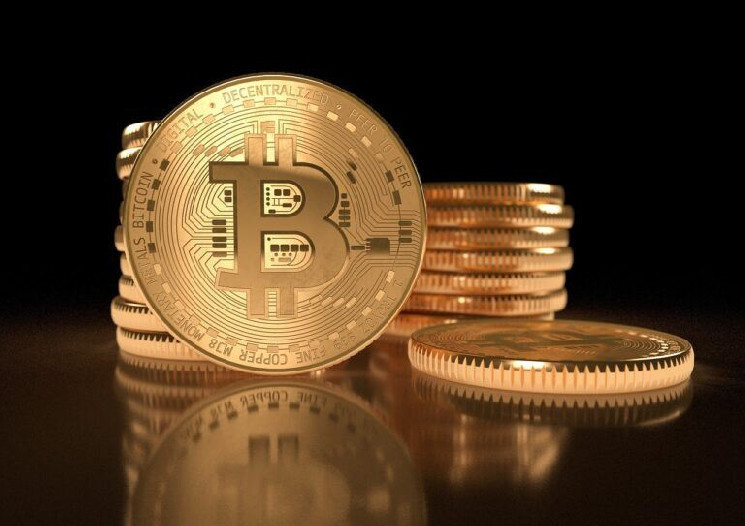During a recent interview with CNBC, Nik Bhatia provided a deep and nuanced understanding of Bitcoin’s role within the financial ecosystem.
Nik Bhatia is a recognized financial expert, author, and educator with a strong focus on Bitcoin and macroeconomic analysis. He is the founder of The Bitcoin Layer, a research platform that offers insights into Bitcoin through a global macroeconomic lens. Bhatia is also an adjunct professor at the University of Southern California’s Marshall School of Business, where he teaches courses on fixed income securities and Bitcoin.
He is best known for his book “Layered Money: From Gold and Dollars to Bitcoin and Central Bank Digital Currencies,” which explores the historical evolution of money and the transformative impact of Bitcoin on the financial system. In addition to his academic and literary contributions, Bhatia is a former bond trader, bringing a deep understanding of interest rates and market dynamics to his analysis of the cryptocurrency space.
Bhatia begins by emphasizing the relative youth of Bitcoin as a financial instrument. He pointed out that at just 15 years old, Bitcoin is still in its early stages of development compared to traditional assets like stocks, bonds, and commodities. He also mentioned that Bitcoin has predominantly traded as a “risk-on” asset due to its nascent nature, meaning its price movements are closely tied to investor risk appetite. He added that when investors seek higher returns and are willing to take on more risk, Bitcoin often rallies alongside equities and other high-risk assets.
Bhatia notes that Bitcoin has historically exhibited a high correlation with the stock market, sometimes moving in near lockstep with equities. He says this tight correlation suggests that, for most of its history, Bitcoin has not behaved like a “safe haven” asset—such as gold—that investors turn to during periods of market turmoil. Instead, he notes that Bitcoin’s price has tended to rise and fall with the broader market, reflecting its status as a speculative investment rather than a stable store of value.
Despite its general correlation with stocks, Bhatia points out that Bitcoin has, on several occasions, decoupled from the stock market. During these periods of decoupling, Bitcoin has experienced exponential gains, which is when he believes it “shines as a hedge against fiscal and monetary profligacy.” In other words, according to Bhatia, when governments and central banks engage in excessive money printing and fiscal stimulus, Bitcoin’s value can surge independently of the stock market, positioning it as a potential hedge against such policies.
These periods of decoupling, argues Bhatia, are critical for understanding Bitcoin’s long-term potential and they demonstrate Bitcoin’s ability to serve as a hedge against the kind of fiscal and monetary excesses that can lead to inflation and currency devaluation.
Bhatia acknowledges that Bitcoin is still not mature enough to fully assume the role of a safe haven asset. He says that while it has shown flashes of this potential, its overall behavior remains too volatile and too closely tied to risk-on market dynamics. He mentioned that this volatility was evident in recent market movements, where Bitcoin’s price plummeted alongside global stocks.
However, Bhatia suggests that Bitcoin is “attempting to take the role as this Safe Haven asset,” particularly as a response to ongoing monetary and fiscal policies worldwide. The idea here is that as Bitcoin matures and its adoption grows, it could increasingly serve as a hedge against inflation and the risks associated with excessive money printing.
During the interview, Bhatia also touches upon specific events that have influenced Bitcoin’s market dynamics. He refers to Bitcoin’s historical seasonality, noting that the cryptocurrency has gone through several bull markets followed by significant drawdowns, ranging from 75% to 90%. For instance, after the collapse of FTX and the downfall of Sam Bankman-Fried in 2022, Bitcoin experienced an 80% drawdown.
Despite these dramatic price declines, Bhatia remains optimistic about Bitcoin’s current trajectory. He argues that Bitcoin is in the middle of a bull market, bolstered by positive developments like Grayscale’s legal victory over the U.S. SEC, which has paved the way for US-based spot Bitcoin ETFs. Bhatia thinks the approval of US-based Bitcoin ETFs in the spot market has brought significant capital into the asset class, further supporting the ongoing bull market.
Bhatia acknowledges the fear among Bitcoin holders following its recent price dive from the mid-70s to below $50,000. However, he reassures that such drawdowns are typical within Bitcoin’s bull markets, where prices often see corrections of 25% to 50%. According to Bhatia, as long as Bitcoin remains above key technical levels—around $38,000 to $42,000—it is still in a bull market.
He recognizes that the current market conditions can feel “very scary” for Bitcoin holders, but he suggests that these corrections are a natural part of the asset’s price evolution. Bhatia’s long-term view remains bullish, particularly as Bitcoin continues to establish itself as a legitimate financial instrument within the broader market.
Featured Image via Pixabay
 cryptoglobe.com
cryptoglobe.com
